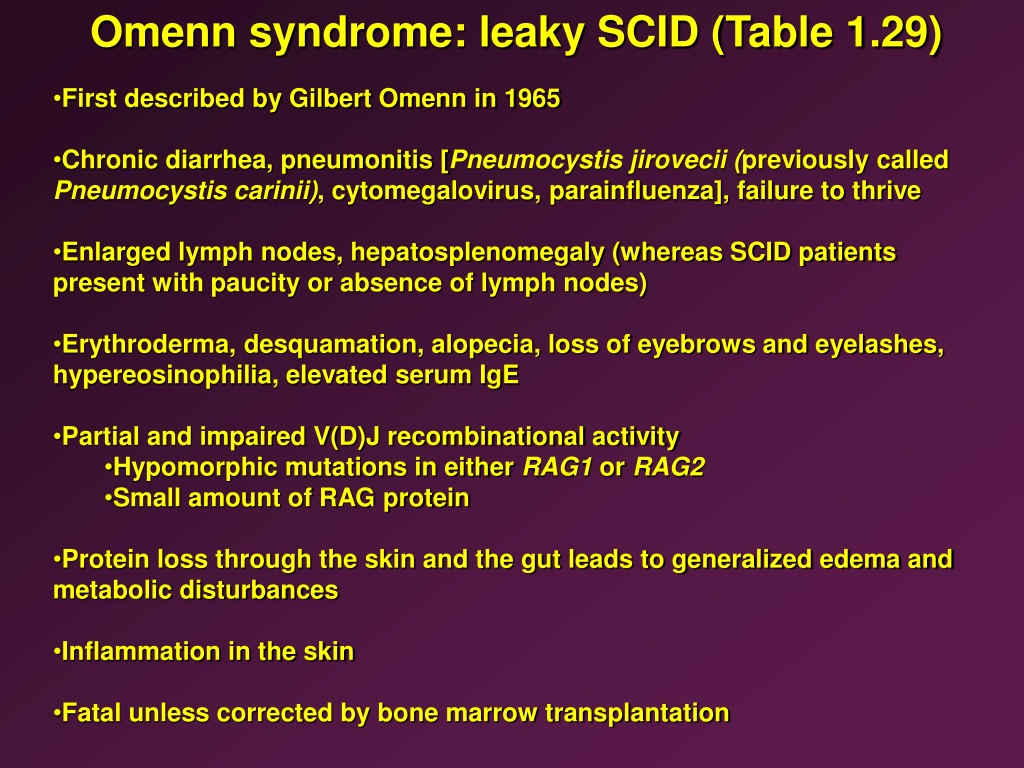

This patient had both self-reactive cells and transplacentally acquired maternal T cells, allowing us to simultaneously evaluate the function and tolerance capacities of both cell types. An unusual case of an immunodeficient SCID patient with a mild OS phenotype is also presented. This review provides an updated functional characterization of transplacentally acquired maternal T cells and compares them with the T cells of an OS patient. The traditional view is that self-reactive cells and transplacentally acquired maternal T cells cannot occur concomitantly in the same OS patient. One distinctive feature of SCID patients, which can sometimes resemble the clinical picture of OS, is the presence of alloreactive cells that originated from transplacentally acquired maternal T lymphocytes. In some cases, however, T cells may be affected by defects that allow some T-cell development but compromise T-cell function such as in Omenn syndrome (OS), which is characterized by impaired T cell differentiation in the presence of abnormal self-reactive cells. Let us know how this access is important for you.Patients with severe combined immunodeficiency (SCID) typically present with profoundly reduced T cells. Many UC-authored scholarly publications are freely available on this site because of the UC's open access policies. This lesson is critical for patient care, as well as the design of future prospective treatment studies for such children because a well-defined and consistent study population is important for precision in outcomes analysis. ConclusionLack of complete laboratory evaluation of patients before HCT presents a significant barrier to definitive diagnosis of SCID and related disorders and prevented inclusion of subjects in our observational HCT study. Overall (n = 332) rates of testing were as follows: proliferation to PHA, 77% maternal engraftment, 35% and genotype, 79% (mutation identified in 62%). Reasons for noneligibility were failure to demonstrate either impaired lymphocyte proliferation or maternal T-cell engraftment.

Detection of a genotype predicting an SCID phenotype was accepted for eligibility. Of the 285 eligible patients, 84% were classified as having typical SCID 13% were classified as having leaky SCID, Omenn syndrome, or reticular dysgenesis and 3% had a history of enzyme replacement or gene therapy. ResultsTwo hundred eighty-five (86%) of the patients were determined to be eligible, and 47 (14%) were not eligible. Eligibility for inclusion in the study and classification into disease groups were established by using set criteria and applied by an expert review group. MethodsClinical records from 2000 through 2009 at 27 centers in North America were collected on 332 children treated with hematopoietic stem cell transplantation (HCT), enzyme replacement therapy, or gene therapy for SCID and related disorders. ObjectivesThe Primary Immune Deficiency Treatment Consortium attempted to develop a uniform set of criteria for diagnosing SCID and related disorders and has evaluated the results as part of a retrospective study of SCID in North America. BackgroundThe approach to the diagnosis of severe combined immunodeficiency disease (SCID) and related disorders varies among institutions and countries.


 0 kommentar(er)
0 kommentar(er)
